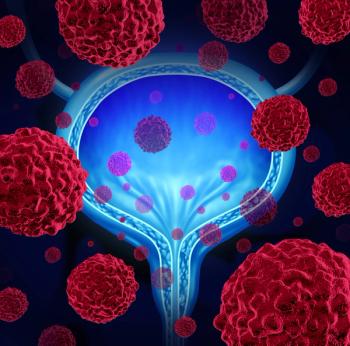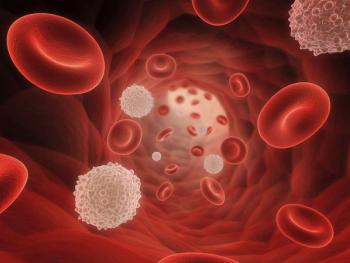
- ONCOLOGY Vol 25 No 8
- Volume 25
- Issue 8
Transplantation or Resection for Hepatocellular Carcinoma: Biology Determines Outcome
In their article “Liver Transplantation for the Treatment of Hepatocellular Carcinoma," Drs. Hanish and Knechtle provide a cogent review of many of the issues surrounding the management of hepatocellular carcinoma (HCC) in patients with cirrhosis.
In their article “Liver Transplantation for the Treatment of Hepatocellular Carcinoma," Drs. Hanish and Knechtle provide a cogent review of many of the issues surrounding the management of hepatocellular carcinoma (HCC) in patients with cirrhosis. This is a rich topic encompassing a complex interplay of surgical and nonsurgical therapies. Given the constraints inherent in a review of this type, the authors could not elaborate on many interesting aspects of this disease process and its management; some of these, however, warrant additional emphasis.
While this review focuses on transplantation, surgical resection continues to play an important role in the management of this disease process. As the authors note, a discussion of resection for HCC in patients with preserved liver function is beyond the scope of this review. The identification of patients with cirrhosis who will benefit from resection, however, is a significant clinical challenge and does have bearing on the role of transplantation in HCC management. Portal hypertension, while an absolute contraindication for major hepatic resection, does not preclude lesser resections. Moreoever, resection and transplantation need not be viewed as mutually exclusive therapies.[1] In appropriately selected patients, resection may be employed initially, with transplantation reserved as a salvage therapy;[2,3] or for selected patients with higher-risk features identified after pathologic assessment of the resected tumor (so called “de principe" transplantation);[4,5] or as a bridge to transplantation.
While all of these strategies have been employed with some success, the appropriate choice of therapy depends on a thorough preoperative evaluation that anticipates the extent to which underlying liver disease and tumor biology will influence outcome. This requires both a coordinated multidisciplinary effort and high quality imaging.[6,7] In those patients in whom resection is employed initially or following transplantation, full pathologic assessment is feasible and allows a more accurate prediction of outcome.[8] In the latter scenario, however, there is a potential for transplantation in patients who will not benefit (eg, either those with enhancing regenerative nodules on cross sectional imaging misidentified as HCC or those with more extensive disease than anticipated). Because of this, the role of biopsy has been explored, most extensively by the group from the University of Toronto, who employed poor tumor differentiation as an exclusion criterion for transplantation;[9] this remains an area of active investigation.
Because of the availability of non-surgical therapies that modulate disease extent (eg, transarterial chemoembolization, transarterial radioembolization and radiofrequency ablation), the preoperative assessment has become even more complex. In patients with compensated cirrhosis who are potential candidates for major resection, portal vein embolization (PVE) can, and often should be employed. The authors endorse a functional liver remnant (FLR) cut-off of 40% when considering liver resection in patients with cirrhosis.[10] FLR growth, defined as the degree of hypertrophy (post-PVE FLR minus pre-PVE FLR), is also a predictor of favorable outcome from hepatic resection.[11]
The criteria for transplantation continue to evolve as well, and the authors summarize the University of California San Francisco and University of Toronto experiences that extend the Milan criteria, allowing transplantation in patients with greater tumor burden. It is useful to view these experiences in the context of the major determinants of outcome in patients with HCC, with or without cirrhosis, and the Joint Committee on Cancer/International Union for Cancer Control staging system. Numerous studies have affirmed the dominance of vascular invasion as a prognostic feature over morphologic criteria. Indeed, while tumor size predicts vascular invasion, it has no significant impact on survival in the absence of vascular invasion.[12,13] Because the histological diagnosis of vascular invasion is impossible prior to transplantation, features other than size that predict vascular invasion (eg, alpha-fetoprotein level, the presence of multiple tumor nodules) can be used to identify patients at greater risk of recurrence.[9,14]
In conclusion, transplantation removes the field of cancerization while effectively treating chronic liver disease. Given the limited availability of transplantable organs, resection remains the main curative modality for HCC. Judicious patient selection for resection, including enhancement of the FLR through preoperative PVE, expands the role of resection. Non-surgical interventions should be utilized in patients who are not candidates for surgery. Finally, the growing experience with transplantation for HCC is reaffirming the primacy of tumor biology and the need for molecular markers that predict outcome as alternatives to the current clinical criteria.
Financial Disclosure:The authors have no significant financial interest or other relationship with the manufacturers of any products or providers of any service mentioned in this article.
References:
REFERENCES:
1. Belghiti J. Resection and liver transplantation for HCC. J Gastroenterol. 2009;44 Suppl 19:132-5.
2. Cherqui D, Laurent A, Mocellin N, et al. Liver resection for transplantable hepatocellular carcinoma: long-term survival and role of secondary liver transplantation. Ann Surg. 2009;250:738-46.
3. Otsuka Y, Duffy JP, Saab S, et al. Postresection hepatic failure: successful treatment with liver transplantation. Liver Transpl. 2007;13:672-9.
4. Sala M, Fuster J, Llovet JM, et al. High pathological risk of recurrence after surgical resection for hepatocellular carcinoma: an indication for salvage liver transplantation. Liver Transpl. 2004;10:1294-300.
5. Scatton O, Zalinski S, Terris B, et al. Hepatocellular carcinoma developed on compensated cirrhosis: resection as a selection tool for liver transplantation. Liver Transpl. 2008;14:779-88.
6. Vauthey JN, Dixon E, Abdalla EK, et al. Pretreatment assessment of hepatocellular carcinoma: expert consensus statement. HPB (Oxford);12:289-99.
7. Dixon E, Abdalla E, Schwarz RE, Vauthey JN. AHPBA/SSO/SSAT sponsored Consensus Conference on Multidisciplinary Treatment of Hepatocellular Carcinoma. HPB (Oxford);12:287-8.
8. Vauthey JN, Lauwers GY, Esnaola NF, et al. Simplified staging for hepatocellular carcinoma. J Clin Oncol. 2002;20:1527-36.
9. DuBay D, Sandroussi C, Sandhu L, et al. Liver transplantation for advanced hepatocellular carcinoma using poor tumor differentiation on biopsy as an exclusion criterion. Ann Surg;253:166-72.
10. Kubota K, Makuuchi M, Kusaka K, et al. Measurement of liver volume and hepatic functional reserve as a guide to decision-making in resectional surgery for hepatic tumors. Hepatology. 1997;26:1176-81.
11. Ribero D, Abdalla EK, Madoff DC, Donadon M, Loyer EM, Vauthey JN. Portal vein embolization before major hepatectomy and its effects on regeneration, resectability and outcome. Br J Surg. 2007;94:1386-94.
12. Roayaie S, Frischer JS, Emre SH, et al. Long-term results with multimodal adjuvant therapy and liver transplantation for the treatment of hepatocellular carcinomas larger than 5 centimeters. Ann Surg. 2002;235:533-9.
13. Vauthey JN, Ribero D, Abdalla EK, et al. Outcomes of liver transplantation in 490 patients with hepatocellular carcinoma: validation of a uniform staging after surgical treatment. J Am Coll Surg. 2007;204:1016-27; discussion 1027-8.
14. Pawlik TM, Delman KA, Vauthey JN, et al. Tumor size predicts vascular invasion and histologic grade: Implications for selection of surgical treatment for hepatocellular carcinoma. Liver Transpl. 2005;11:1086-92.
Articles in this issue
over 14 years ago
Liver Transplantation for the Treatment of Hepatocellular Carcinomaover 14 years ago
Adverse Prognostic Features in Chronic Lymphocytic Leukemiaover 14 years ago
Are Prognostic Factors in CLL Overrated?over 14 years ago
Arsenic Trioxide in the Management of APL: Proceed With CautionNewsletter
Stay up to date on recent advances in the multidisciplinary approach to cancer.

















































































